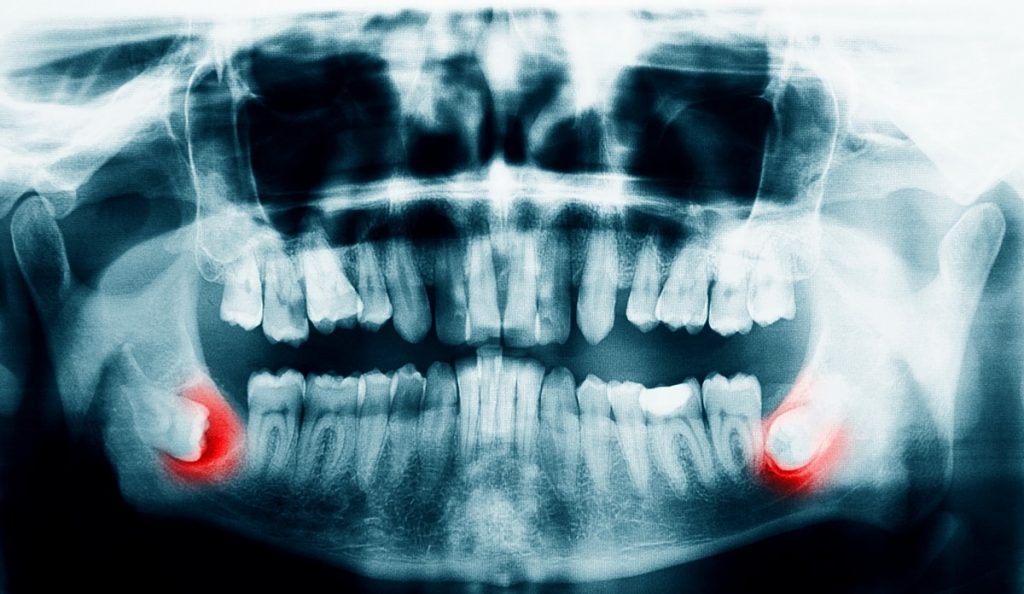Surgical Tooth Extraction
Your teeth are very important, not only for speaking and eating, but also for maintaining the strength and structure of your jawbone and oral cavity. This is why, wherever it’s possible, your dentist will recommend tooth restoration over tooth extraction. In the rare case that a tooth has suffered from extensive damage due to injury or decay, there is overcrowding issues or some other problem that cannot effectively be resolved through restoration procedures, your dentist may recommend extraction. He may also recommend extraction if this is more financially feasible for you than restoration procedures.

Why Surgical Tooth Extraction May Be Necessary
Simple tooth extraction occurs when a tooth has straight roots, extends above the gumline and is structurally sound enough to be loosened and extracted in one piece from above the gums. Surgical tooth extraction occurs where surgical techniques must be used in order to section the tooth into pieces or to make an incision in the soft tissue for tooth removal. The surgical tooth extraction procedure is used to remove impacted wisdom teeth, extensively damaged teeth that have little or no intact structure or teeth that are contributing to overcrowding issues and cannot be removed through simple tooth extraction. In order to perform a surgical tooth extraction, your dentist will:
- Review your health history. It is important to consider whether you may need antibiotic premedication prior to surgical tooth extraction in order to ensure a smooth procedure and recovery. Your dentist may also ask you to temporarily suspend your use of blood thinning medications for several days before and after the procedure to minimize the risk of prolonged extraction site bleeding.
- Administer anesthesia. In order to ensure the surgical tooth extraction procedure is as comfortable as possible, your dentist will administer local anesthesia to numb the area directly around the tooth.
- Incise and elevate gum flap if necessary. Where the tooth is either not visible or is only partly visible, your dentist will need to expose it with gum incision and elevation.
- Release periodontal ligament fibers. Though teeth are not fused to the bone, they are suspended in the bony tooth socket with shock-absorbing ligament fibers. Your dentist will use a special dental tool called a periotome to release these fibers so that the tooth can be removed.
- Remove bone as needed. In some cases bone must be removed from around the tooth in order to allow for extraction.
- Place a gauze safety net. In order to protect against inhaling or swallowing the tooth upon its removal, your dentist will place a gauze safety net at the back of the mouth.
- Section the tooth if necessary. In many cases, teeth that require surgical extraction must also be sectioned into pieces in order to be safely and easily removed. Your dentist will decide how many pieces to section your tooth into depending upon the number and shape of the roots as well as whether there are nerves nearby that need to be protected.
- Loosen the tooth and expand the bony socket. The bony socket of a tooth is somewhat pliable, which means it can be safely and gently expanded in order to allow for easier tooth removal. Using a special dental tool called an elevator, your dentist will apply leverage to the tooth in order to loosen it and expand the bony socket. That said, teeth that have been sectioned into pieces for easier removal don’t usually require bony socket expansion.
- Remove the tooth. Your dentist will gently remove the tooth from the socket, taking pieces out in a specific sequence in order to ensure smooth removal.
- Perform ridge preservation with socket graft if necessary. Where teeth that are being removed need to be replaced, your dentist may want to perform a socket graft in order to slow the normal bone reabsorption process and thereby preserve the normal height and width of the bony ridge.
- Apply pressure to control bleeding. There are no major arteries in tooth sockets, so the bleeding that follows tooth extraction is usually minimal. However, by applying pressure and gauze to the area, your dentist can help to further control and minimize this bleeding.
- Give you post-operative instructions. It is very important to take proper care of your mouth, especially after a tooth extraction procedure. Your dentist will give you instructions and answer any questions you may have following your surgical tooth extraction.
For more information about surgical tooth extraction, contact Dr. Nurminsky today.
